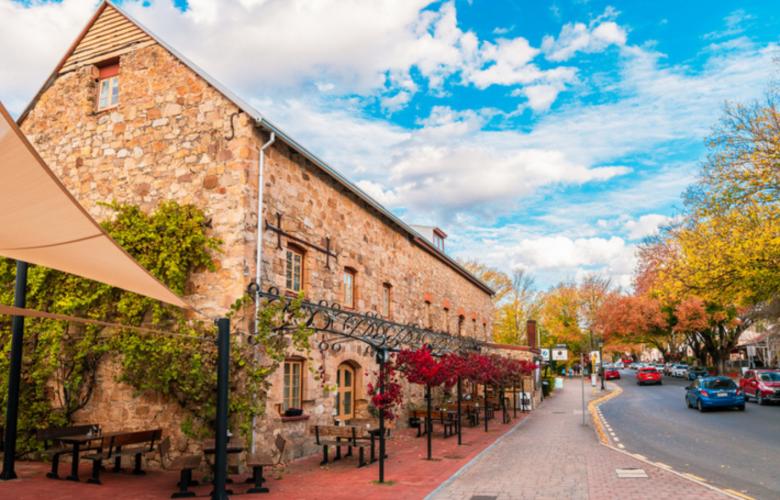Regional hotels – the key to a comprehensive property portfolio
Contact
Regional hotels – the key to a comprehensive property portfolio
Data from Tourism Research Australia reveals a significant boost in domestic tourism with overall spend being up by 24 per cent overnight trips increasing by 10 per cent.
Australians are rediscovering the charm of their own backyard. With the memory of international travel restrictions still lingering, growing international sociopolitical uncertainty and overseas holiday costs rising, regional getaways are seeing unprecedented demand. This shift is not only revitalising regional tourism, but also presenting an opportunity for property investors looking to capitalise on high-performing regional hotel assets.
While major gateway cities like Sydney, Melbourne and Brisbane remain key entry points for international visitors, more travellers, both domestic and international, are looking beyond capital cities to explore Australia’s natural landscapes, cultural heritage and local experiences that can be found in regional travel destinations. The Great Ocean Road, Hunter Valley and Tasmania are attracting growing visitor numbers, creating a strong market for well-located accommodation assets.
Data from Tourism Research Australia reveals a significant boost in domestic tourism, with overall spend being up by 24 per cent, overnight trips increasing by 10 per cent and nights away increasing by 7 per cent year-on-year from September 2022 to 2023. This upward trend slowed down, but carried into 2024, with further growth expected through to 2029.
International arrivals are also expected to hit a record 10.2 million in 2025, exceeding pre-pandemic levels, leading to higher occupancy rates, stronger room rates, and improved returns for investors.
Institutional and private investors are already capitalising on the growing popularity of regional travel. In 2024, investment manager Salter Brothers and privately owned hotel group, Schwartz Family Co. expanded their portfolios with key regional acquisitions.
Salter Brothers acquired the Bannisters portfolio, which includes boutique coastal hotels in Mollymook and Port Stephens. The fund manager now owns 40 hotel assets, half of which are in regional areas, and has integrated the Bannisters hotels into its Hospitality Retreat Fund, which houses 13 properties and 407 guest rooms, including multiple Spicers Retreats resorts, which are also predominantly regional.
Schwartz Family Co, led by Dr. Jerry Schwartz, Australia’s largest private hotel owner, purchased the Leura Gardens Resort in the Blue mountains in New South Wales in 2024, adding to an impressive hotel portfolio that now exceeds 4,000 rooms nationwide.
These acquisitions reflect a strategic move toward regional assets located within a two to three-hour drive of major cities. Compared to city hotels, regional properties typically have lower purchase and development costs, reducing the barrier to entry for investors. This makes regional investments more accessible while still delivering strong returns, especially in high-demand areas that cater to experiential travel, affordable family getaways, and the MICE (Meetings, Incentives, Conferences, and Exhibitions) market.
Two critical indicators for hotel investors are Average Daily Rate (ADR) and Revenue Per Available Room (RevPAR), both of which have rebounded strongly post-pandemic. According to CBRE, Sydney’s RevPAR increased by 8.6 per cent in 2024 compared to the previous year, with similar trends seen in high-performing regional markets like Byron Bay, Port Douglas and the Hunter Valley.
In Byron Bay, hotel property values subsequently soared by over 45 per cent in the three years leading into 2024, while Port Douglas saw a 38 per cent rise and the Hunter Valley recorded a 32 per cent rise in hospitality property values. RevPAR growth therefore indicates not only higher room rates but also strong occupancy levels, making regional hotel investments increasingly attractive.
The Australian Government is making substantial investment into promoting regional tourism at both state and federal levels.
The New South Wales Government has allocated $30 million to the Regional Tourism Activation Fund, a key component of the broader $2 billion Regional Growth Fund, aimed at enhancing new and existing tourism infrastructure across regional New South Wales.
The Victorian Regional Tourism Investment Fund offers grants of up to $5,000 to support new and innovative tourism infrastructure projects across regional and rural Victoria, aiming to boost visitation, extend visitor stays and enhance the overall quality of tourism experiences in the area.
The South Australia Regional Visitor Strategy 2025 aims to boost regional tourism expenditure to $4 billion and sustain 24,000 tourism jobs through the strategic priority action areas set by the state’s eleven tourism regions.
Investments in infrastructure, transport and marketing aimed at promoting tourism projects and events in these regions are making regional hotel assets even more attractive to investors. As property prices in capital cities continue to stretch investor budgets, property investors are increasingly focusing on regional tourism hotspots to diversify their portfolios.
This shift is not just about seeking higher yields, it’s about taking advantage of a fundamental change in how Australians support local economies. The post-pandemic increase in domestic travel has led to a significant rise in demand for quality accommodation in top tourist destinations, resulting in some of the lowest vacancy rates in the past decade. For property investors, this boom presents unique opportunities in markets that have traditionally been overlooked by private and institutional investors.
Various types of hotels are thriving in regional areas, each catering to different traveller preferences. Boutique hotels, offering personalised and high-end experiences that reflect the local character, are particularly popular with couples and luxury travellers. Environmentally conscious accommodation is gaining traction in regions like Tasmania and Tropical North Queensland, where sustainability and nature immersion are key priorities for visitors.
Mid-range family resorts, with child-friendly amenities like pools, playgrounds and activity programs, are performing well near natural attractions like the Great Ocean Road and Blue Mountains. Luxury resorts and lodges in wine regions or near iconic landmarks are in high demand, offering exclusivity and exceptional service.
As capital city property prices continue to strain investor budgets, regional tourism assets are becoming an increasingly attractive alternative. The combination of rising domestic and international tourism, strong ADR and RevPAR performance, and government support, makes regional hotel investments a lucrative opportunity for property investors seeking to diversify their portfolios.
Beyond strong occupancy and revenue potential, regional hotel investments also offer significant tax advantages through depreciation deductions. Investors can claim depreciation on the wear and tear of both the building structure and plant and equipment assets, reducing taxable income and improving cash flow. A depreciation schedule prepared by a depreciation specialist like BMT Tax Depreciation, can help investors maximise their depreciation deductions and increase cash flow, making regional hotel investment even more financially viable.
For more information on the potential depreciation deductions available on a commercial property, contact BMT Tax Depreciation on 1300 728 726 or request a quote
By BMT Tax Depreciation







